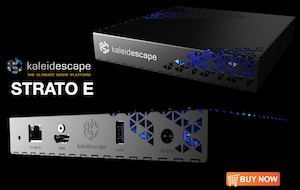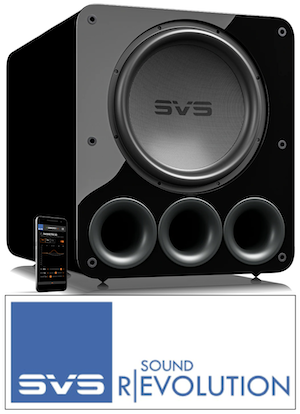Catching up on this thread, beg pardon if I have misunderstood any of the previous posts, or if I end up beating an already thoroughly covered topic to death...
It never ceases to amaze me how some folks simply refuse to believe that human beings are NOT objective, precision instruments. It's noteworthy that Toole said "shown with monotonous regularity ", these issues are settled... Our ears are not microphones, our eyes are not cameras, what you perceive is a creation of the brain and is in no way some kind of simple mapping or linear recording of sensory inputs... It's foolish to believe you can be objective in these things, you simply can't, not if you're a human being.
There is no doubt in my mind that this is true. I have - unwittingly - demonstrated this myself in an A-B speaker comparison that turned out to be an A-A test (thanks, Sonnie!) where I was listing all the differences I thought I heard between A and, uh, er, A as it turned out.
AWKWARD!
For me, critical listening has become a quest for truth, or rather a quest to become as truthful a listener as possible, by challenging my own perceptions, by being methodical, by asking tough questions, altering perspective and asking them again and again, getting ego out of the way (or trying) and being willing to be wrong and eager to learn from every experience. It is the hardest work I have ever done, Sometimes I think I do a decent job of it, and others I fall on my face and have laugh at my own foolishness.
A quick note concerning the topic of this thread, Toole's book, and his research in audio.
1. I am not a fan of hero worship. and there is plenty of that around for whose work we learn from and whose work we build upon. Not to minimize their accomplishments just to keep them in perspective. Even scientists have biases and make assumptions. This rebelliousness on my part could be deemed a "personal problem," I admit.
2. I am a huge fan of science and the scientific method which aids us in creeping up on the truth, ever closer but never quite there. Here we must give credit for research well done, even while we - anyone - can question, poke, prod, offer an alternate view, along with supporting data, while hopefully remembering that we are all quite fallible, and that the goal is to help nudge the work a little closer to the truth, whatever it may be.
3. There will always be those who chose faith over science in the service of their personal audio preferences. It is anyone's right to do so, although it can be a frustration and disruption to the furthering of the science being pursued.
4. Studies tend to look for averages (statistics!) and downplay outliers. This is fair, I guess, unless YOU are the outlier! A close look at the exceptions can be very enlightening!
5. There are few absolutes (the speed of light?), and a lot of tendencies, even strong ones, often quite trainable with the right tools.
6. This is a hobby, it is for fun and pleasure, although it can get expensive and THAT can make it very serious in the end.
I have posted a few questions on other forms after reading the book and wondering if people had any other thoughts:
1) Speaker positioning from the front wall and soundstage depth:
There was not too much discussion in terms of ideal positioning from the front wall outside of knowing about speaker boundary interference and adjacent boundary effects and how it will affect the bass response. It seems that bass response is the main consideration with positioning the speaker in/flush/in front/away from the front wall. Toole says “Adding absorption to the front wall, behind the loudspeakers, reportedly improved image localization and reduced coloration... Memo for Listening room recommendations: add sound absorbing material to front wall”
Absorption on the front wall seems to have only limited effect on frequency response, but damps out any resonances and can thereby reveal lots of fine detail in a recording. While the science of immersive soundstage and imaging (SS&I) seems far from complete, I offer that the magnitude, timing, and direction (relative to the direct signal) of reflections off of the surfaces close to the speaker contribute to their creation and that absorption in the right places can preserve desired reflections while absorbing / damping others, enhancing image clarity. "Desired" reflections vs those that disrupt the effect depend highly on speaker, placement, and room - my belief based on experience and measurements, all subject to change. It will be interesting to read Toole's views on this.
It seems the general audiophile advice is to pull speakers away from the front wall to help create a deeper soundstage etc yet I did not see this explicitly mentioned by Toole or Geddes. They seem to be ok with positioning the L&R speakers close to the front wall as long as one pays attention to bass response and possibly absorbs.
It is not clear that SS&I were high priorities for Toole's work - it is an important personal goal in reading his book to see whether or not it was and how he suggests achieving it.
What I am wondering is if there truly is a benefit in soundstage depth with pulling the speakers away from the front wall?
Or do people think it is a psychoacoustic effect by having the front wall further away from the source (not saying that it is not a very real psychological effect, but merely one that cannot be seen on the frequency response, nor reproducible with blind tests)?
I wonder if this explains it: “Generations of listeners have noted the obvious differences in directional and spatial impressions created by sounds panned to the real left and right loudspeakers and those panned to intermediate positions, including center. The difference is that the extreme left and right locations are created by monophonic signals, delivered to single loudspeakers, whereas the intermediate image locations result from “stereo” signals, delivered to both loudspeakers simultaneously, with amplitude biases and/or delays appropriate to define the direction. The common impression is that the left and right panned sounds appear to originate in the loudspeakers themselves, whereas the intermediate images appear to originate further back, in a more spacious setting, and sometimes elevated. Instead of a soundstage extending across a line between the loudspeakers, the center images tend to drift back-ward.” - Toole
I have noticed this tendency, although - as previously noted - it seems to depend upon speaker, placement, and room. Floor-to-ceiling damping on the front wall - an option for a two-channel room, not so for a home theater - can reduce the pull-back effect. Front wall treatment is a whole big topic I am interested to read Toole''s thoughts about.
As then if the sound is hard panned to the L or R then it comes further forward (from the speaker), and then if intermediate positions then it appears higher up and further back and hence creates the impression of depth? Do people think that explains what we observe / hear?
What are peoples thoughts on the optimal distance from the front wall and imaging depth?
Working with Sonnie and others in his room (and others), evaluating a lot of speaker pairs, most speaker types benefit in their delivering deeper SS&I when pulled out from the wall. There have been some interesting exceptions that sounded very good in SS&I terms close to the wall. Wish there was a good explanation for this, or way to predict it, but I have none to offer, other than the suggestion that reflections (magnitude, timing, direction re the direct signal) are the main contributors.
3) Precedence Effect and side reflections
I am sure I just missed something somewhere when it comes to the precedence effect. But my understanding is that the primary sound will be heard first and that all reflected sounds will be combined into the first arriving sound. My understanding is that this is commonly misunderstood to mean that the delayed signals are ignored which is certainly not the cacase, as they are combined with the original signal, but that the original signal has all these other delayed signals added into the interpretation of it.
Well put, although I think of it as a STRONG TENDENCY rather than an absolute rule. No description of the Haas Effect that I have encountered even allows for the existence of SS&I, much less explains it. I am tempted to conclude that the common explanations of this important work are inadequate, or that Haas's work did not address the factors essential to SS&I. More to learn from Toole's book.
Toole mentions that delays greater than 30-40ms can then be interpreted as separate sources and thus everything under falls into the precedence effect does it not? So if the signals are being combined to that first signal, then does the distance of reflections matter? Does it matter if the side walls are mere inches vs feet vs meters away? Should it not all be interpreted under the primary signal? If that is the case, then would not all reflections in small rooms (under 30ms), be of no consequence when it comes to imaging? Once again, I am sure I am missing something here, but I like to think I understood that the delayed signal is combined with the original (and not ignored), but that the original signal trumps the delayed signal in terms of localization etc. But now it has me questioning the effects of all reflections and if they truly are damaging to soundstage.
Referring to my previous comment, this has been a cause of endless head-scratching for me as well. It does not add up in a way that makes sense.















